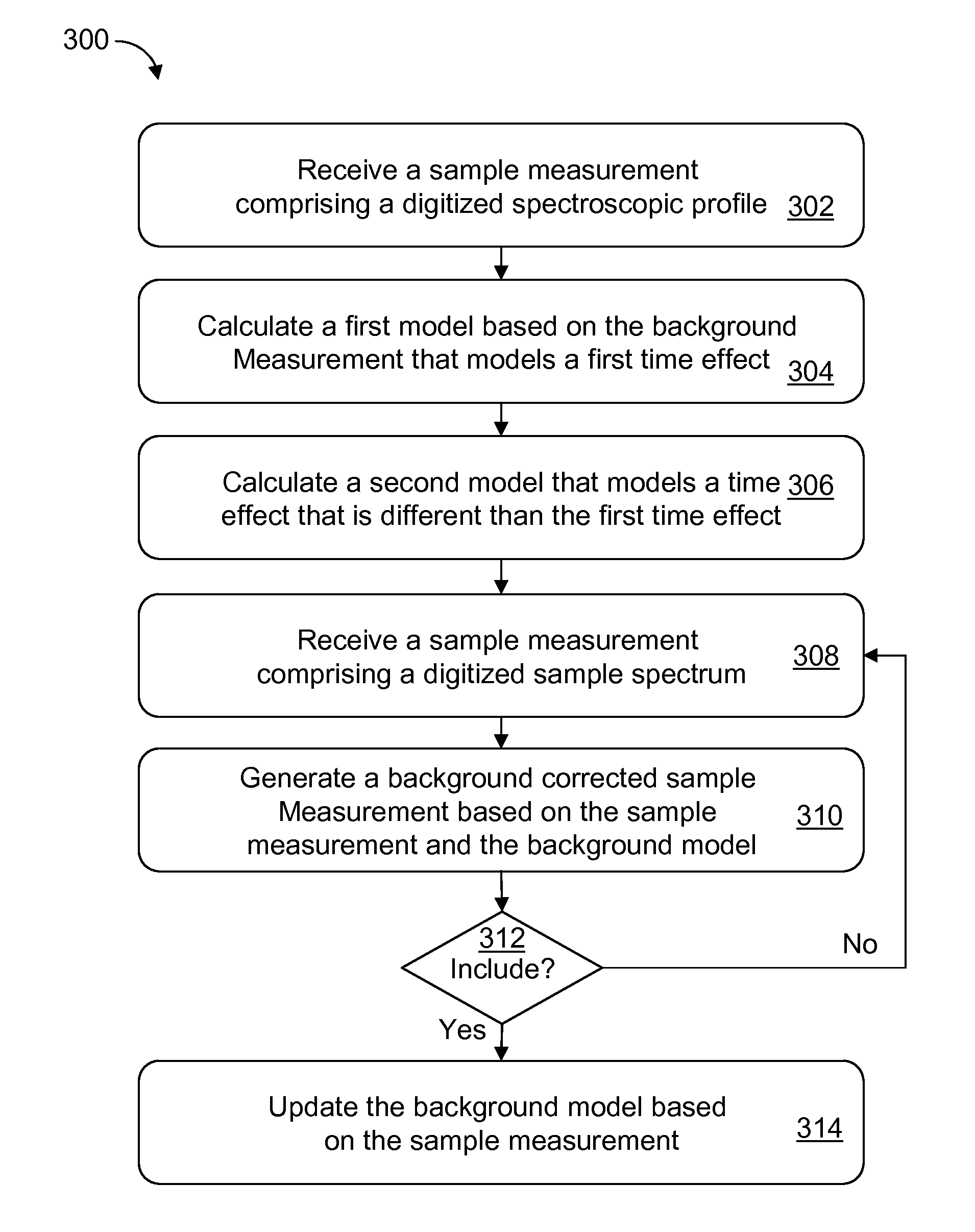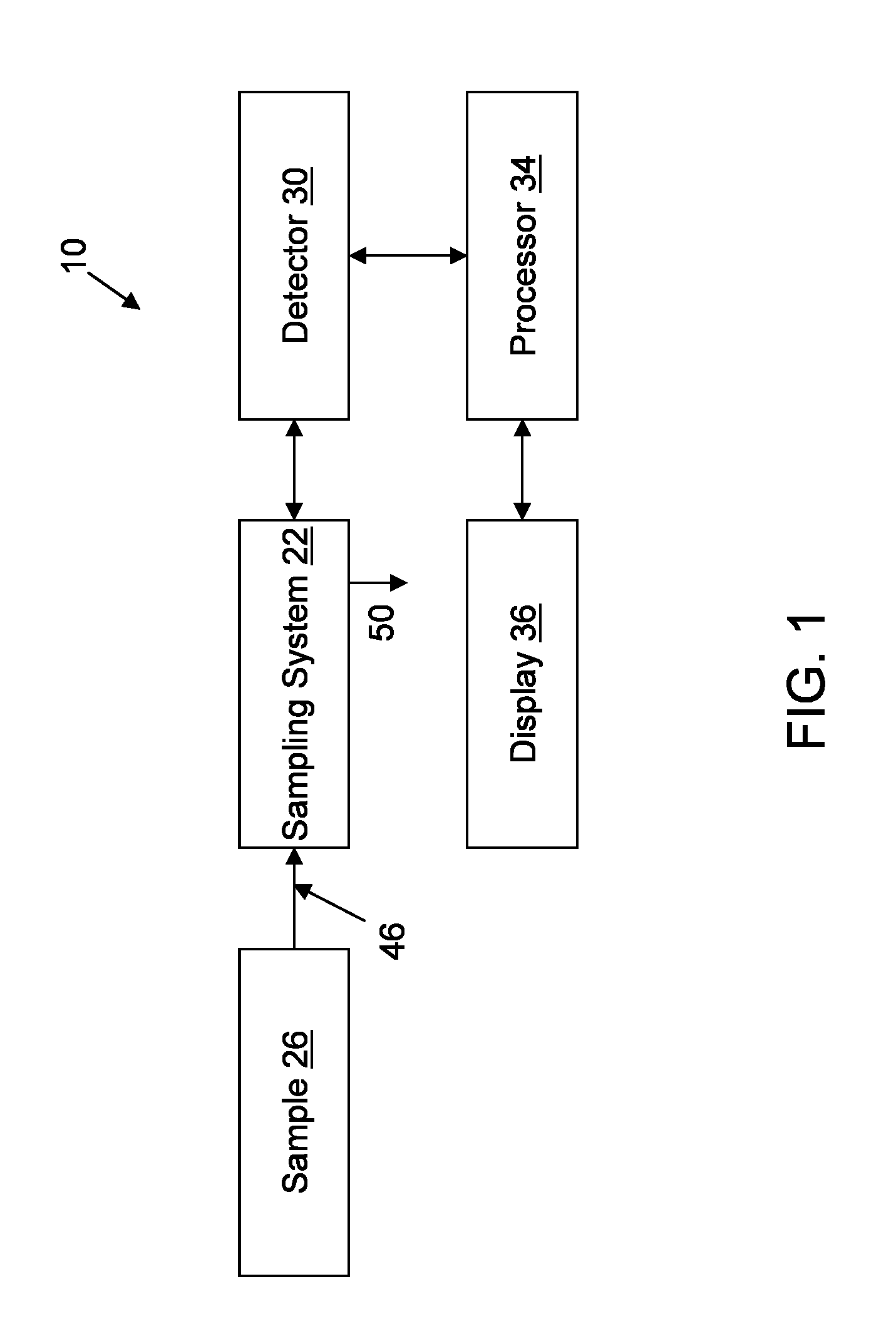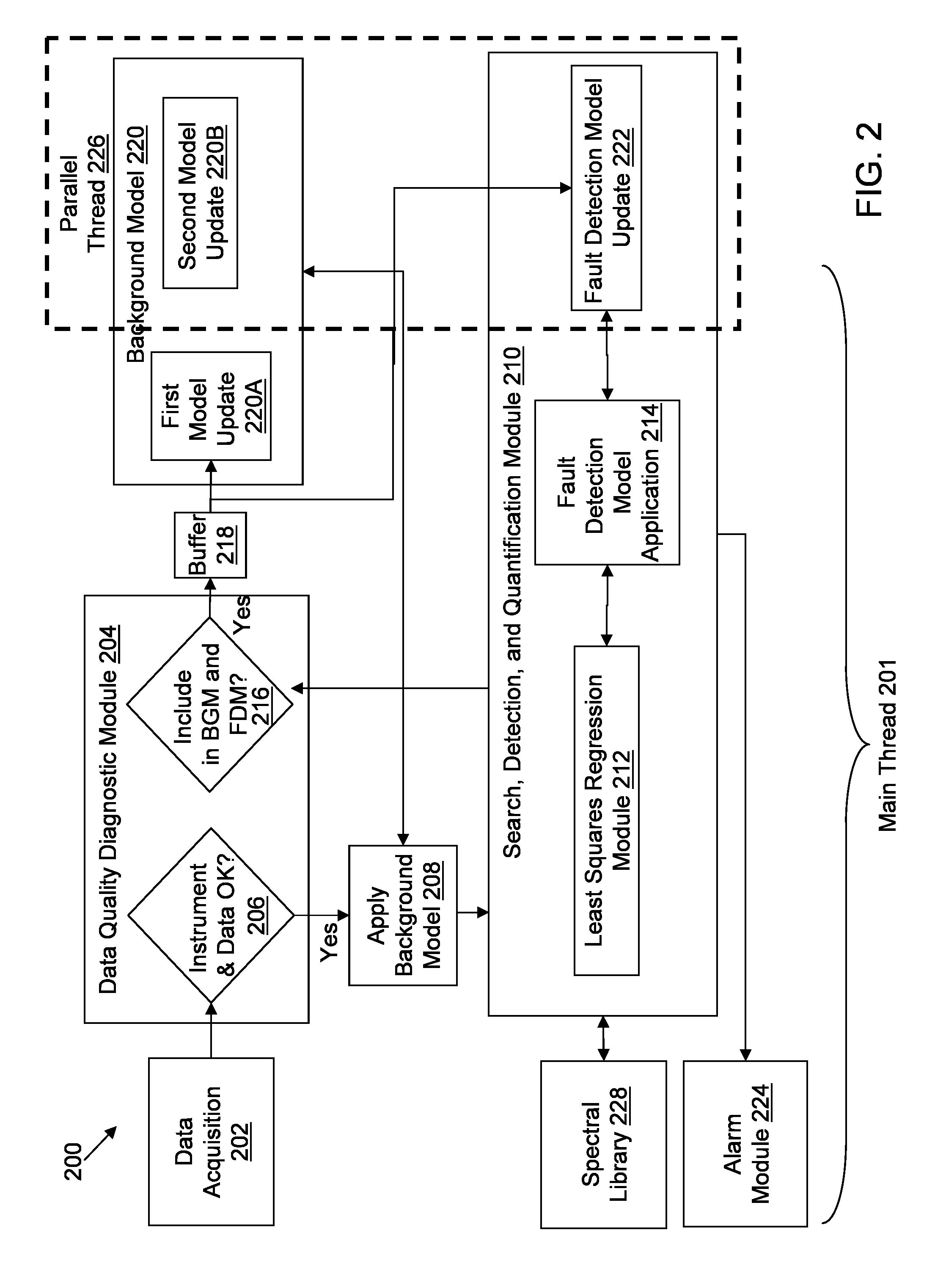Monitoring, Detecting and Quantifying Chemical Compounds in a Sample
a chemical compound and sample technology, applied in the field of monitoring, detecting, and quantifying chemical compounds in samples, can solve the problems of inaccurate and/or erroneous chemical compound detections, single background spectrum does not accurately model the true background of the system, etc., and achieves the effect of improving detection limit, quick implementation, and improving sensitivity
- Summary
- Abstract
- Description
- Claims
- Application Information
AI Technical Summary
Benefits of technology
Problems solved by technology
Method used
Image
Examples
Embodiment Construction
[0041]In general, chemicals at trace or low level concentrations are detected and quantified by analyzing, using a computer program, spectral data from a continuously sampled liquid or gas sample stream. The terms “spectra” and “digitized spectra” can be used interchangeably to refer to digitized spectral information. The computer program comprises a multistage background algorithm, a multistage fault detection, library search, and quantification algorithm, and a data quality diagnostic module.
[0042]The multivariate multistage background algorithm models systemic and / or environmental variations observed in spectral profiles over time. The multivariate multistage background algorithm can precisely and dynamically describe the instrument function and environmental conditions. The multivariate multistage background algorithm includes, for example, a first model (e.g., an evolving background model) and a second model (e.g., a multivariate noise model) that models the remaining noise in ...
PUM
 Login to View More
Login to View More Abstract
Description
Claims
Application Information
 Login to View More
Login to View More - R&D
- Intellectual Property
- Life Sciences
- Materials
- Tech Scout
- Unparalleled Data Quality
- Higher Quality Content
- 60% Fewer Hallucinations
Browse by: Latest US Patents, China's latest patents, Technical Efficacy Thesaurus, Application Domain, Technology Topic, Popular Technical Reports.
© 2025 PatSnap. All rights reserved.Legal|Privacy policy|Modern Slavery Act Transparency Statement|Sitemap|About US| Contact US: help@patsnap.com



